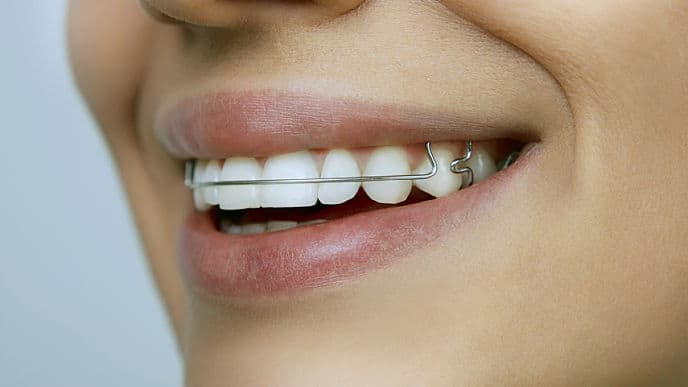A beautiful smile and straight teeth are the dream of every teenager, as well as many adults. Wearing braces isn't the only way to achieve this. Here's how to straighten teeth without braces, depending on your specific condition.
Problems Correctable without Braces
If you have any of these conditions, you may be a candidate for orthodontic treatment that doesn't require you to wear braces:
- Limited overcrowding. If your teeth are only slightly crooked due to minor overcrowding, you may be able to resolve this using retainers.
- Malocclusion. Correcting a bite out of alignment often requires appliances to adjust to the position of your jaw.
- Underdeveloped palate or narrow the upper jaw. Widening your palate with the help of expanders will create the space you need for your teeth to move into their correct positions.
Your orthodontic can ascertain how to straighten your teeth without braces depending on your orthodonic problems. Whichever method you eventually choose, be sure to maintain strict dental hygiene during treatment to ensure that your teeth remain healthy and strong.
Retainers
Fixed retainers, such as bonded lingual retainers, are attached with dental cement to the inner surface of the teeth to prevent them from shifting over time, which helps correct the patient's bite and straighten teeth. A fixed retainer is a good long-term solution, but unfortunately you can't remove it yourself for relief or repair.
Hawley retainers are removable retainers made from metal wires and acrylic formed to the shape of your mouth based on a dental impression. The retainers can be made for the upper and lower arches of the mouth to brace and straighten teeth.
Removable retainers are ideal for those trying to correct their smile's appearance, because you can remove them for special events or occasional relief. But they're easy to lose so it's not uncommon for little ones to leave retainers on lunch trays – and expensive to replace.
Appliances
Devices such as the Herbst appliance, explains Rasch Orthodontics , straighten teeth by correcting jaw imperfections. The Herbst appliance allows the lower jaw to develop in a forward direction which will correct the bite. This enables the upper and lower jaw to meet, which is often what is needed to achieve straight, perfect teeth. This appliance has a metal extension that attaches to the molars to connect the upper and lower jaws. Patients wear this type of appliance for one year, during which time the orthodontist gradually shifts the lower jaw into the correct position.
Headgear is another appliance used to straighten teeth without braces. Protruding upper teeth in children may mean an excessive overbite, which can be corrected with headgear. The appliance places pressure against the child's upper teeth and jaw, which moves both the jaw and teeth into position simultaneously. Patients wear the headgear for a specific number of hours daily to see improvements.
The main disadvantage of these appliances is that they're not very discrete and can take time to allow sufficient results in correcting malocclusions.
Palatal Expanders
If your child's mouth is too small for all the future adult teeth, the orthodontist may insert a palatal expander to widen the arch of the upper teeth. This creates space for the teeth to move naturally into their correct positions. The expander is fastened to the upper molars using dental cement. The orthodontist uses a special key to turn a screw in the center, placing gradual pressure on the left and right halves of the upper jaw. This causes extra bone to grow between the two halves, increasing the width of the mouth so the teeth can shift into position. Expanders are mostly invisible, but patients can experience minimal discomfort each time it's adjusted.
Braces have come a long way in the last several years, but some oral conditions may not need them at all. Ask your dentist for a recommendation on how to straighten teeth without braces.






